Published in 2008, Stylish Sheds and Elegant Hideaways is more relevant than ever!
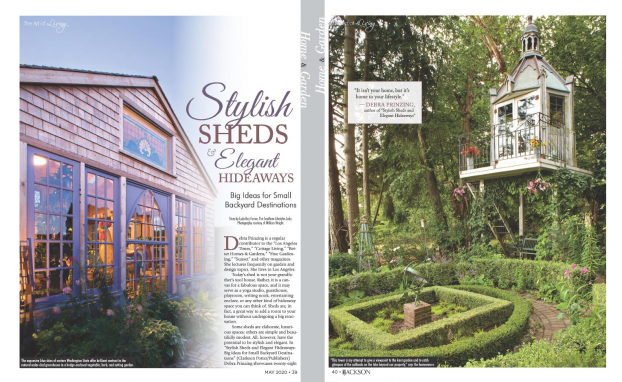
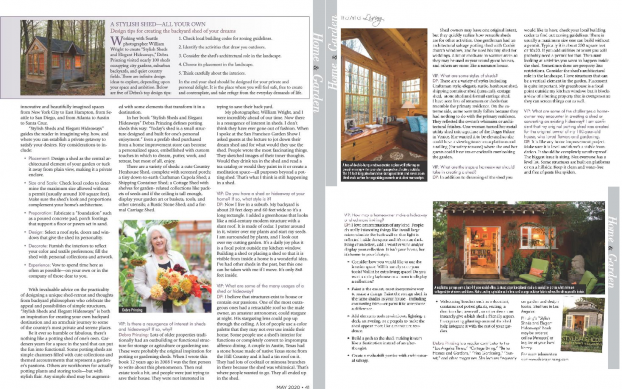
In 2008, after a year of scouting the country for “stylish sheds” with my wonderful collaborator, Seattle photographer Bill Wright, and after months of interviewing shed owners, designers and builders, then writing 50k words or some ridiculous amount of text, Clarkson Potter (Random House) published Stylish Sheds and Elegant Hideaways.
We loved that book so much. We loved how beautiful Bill’s photography was, capturing the personalities and stories of each shed owner, not to mention unique geographical and architectural characteristics of each shed. We loved storytelling through my interviews, conversations that dug deep into the psyche of hideaways, retreats and shelters.
Bill and I were truly ahead of our time. We saw around the corner and we believe that Stylish Sheds captured a shift in how people viewed their gardens and the once-neglected huts or sheds that stood there.
Our book documented that lovely shift toward viewing sanctuary not as somewhere you have to travel to, but somewhere that exists just steps away from your backdoor.
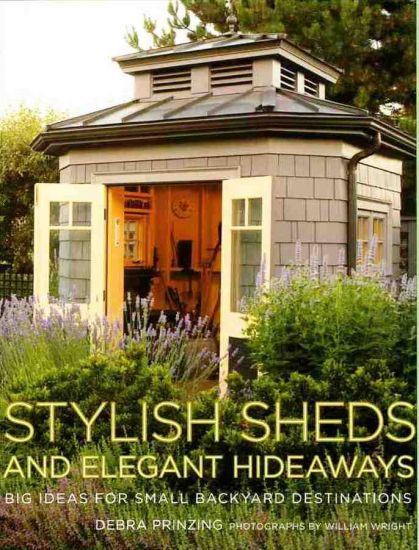 Well, 2008 was a financial disaster and the bottom fell out of the real estate market. Our timing could not have been predicted. Ten years later, a number of copycat books emerged on the marketplace. And Bill and I just sat their and thought: Wow, we were visionaries! The promotional machine we needed in the lifestyle media marketplace was in its own crisis when Stylish Sheds was published. That was the era when magazines like House & Garden, Cottage Living, Domino and others suddenly folded.
Well, 2008 was a financial disaster and the bottom fell out of the real estate market. Our timing could not have been predicted. Ten years later, a number of copycat books emerged on the marketplace. And Bill and I just sat their and thought: Wow, we were visionaries! The promotional machine we needed in the lifestyle media marketplace was in its own crisis when Stylish Sheds was published. That was the era when magazines like House & Garden, Cottage Living, Domino and others suddenly folded.
Eventually, nearly 20k copies of Stylish Sheds were shipped to booksellers, more than any other book I ever wrote. But then, it went out of print a few years later. You can still find this special title on your library shelf and through online sellers of used books.
We were quite suprised recently when Lyda Kay Ferree, a lifestyle writer for a group of magazines in the South, contacted us to see if she could excerpt a few of Bill’s photos and interview me for an April 2020 Home & Garden feature for VIP Jackson Magazine and one of its sister publications.
Lyda Kay definitely “gets” this book. When she contacted me to set up the phone interview, she wrote: “I am fortunate to live in an historic district in a 100-year-old home, complete with the original potting shed with brick walls. (It has electricity but no running water.) I had saved an article about your book as I am getting ideas for my potting shed.”
Well, we had a lovely conversation about Stylish Sheds, and Lyda Kay’s article appears here, with photography graciously provided by Bill. Seeing those beautiful and diminutive structures we documented brings back a flood of memories of that year — between summer of 2006 and summer of 2007 — when Bill and I produced 35 photo shoots in 52 weeks.
Itinerant seekers of inspiration, we felt like we were on a treasure hunt, gathering the best tiny architecture and design ideas to share in our book’s pages.
Lyda Kay has shared the PDF of her article and you can download or read it here. We’re so pleased that she reached out and helped to remind us of this special book and the memories of creating it. Thank you, Lyda Kay!









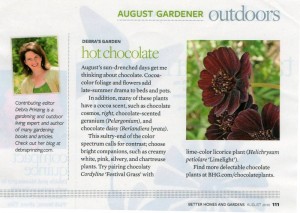

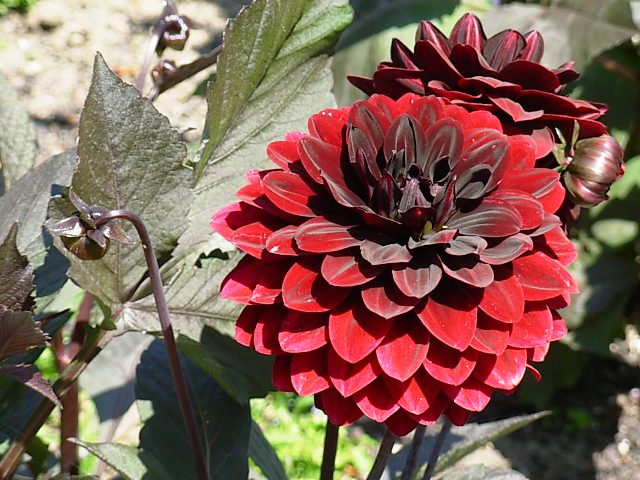
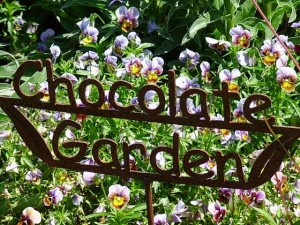 The flowers that Marie Lincoln and Bill Schlicht cultivate at their Whidbey Island nursery specialty nursery are good enough to eat. That’s because
The flowers that Marie Lincoln and Bill Schlicht cultivate at their Whidbey Island nursery specialty nursery are good enough to eat. That’s because 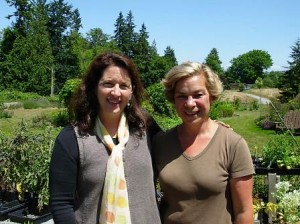
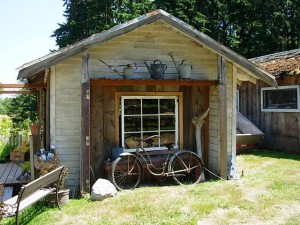
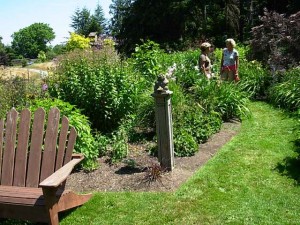

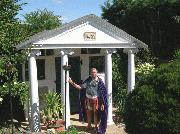
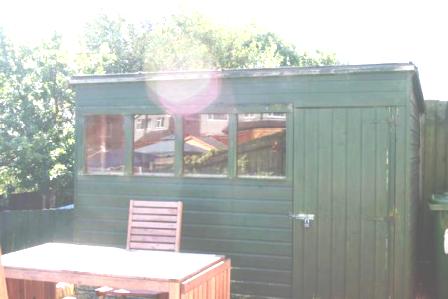
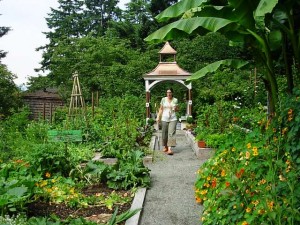
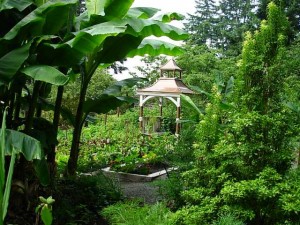
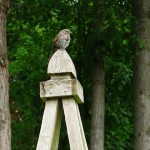
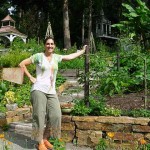
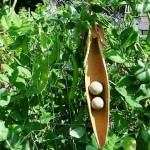


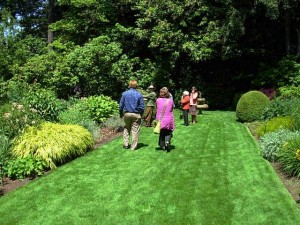
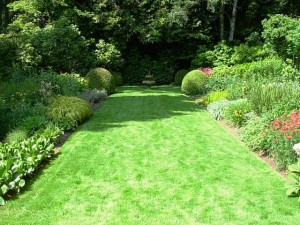
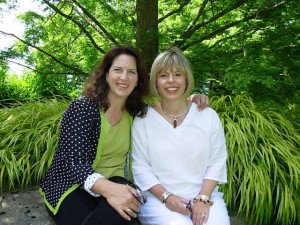
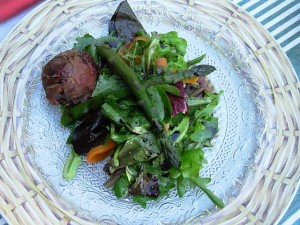
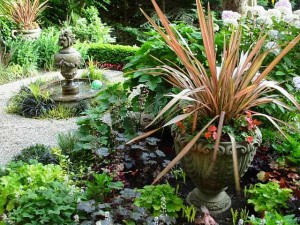
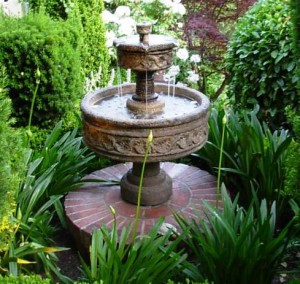
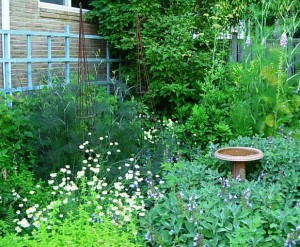
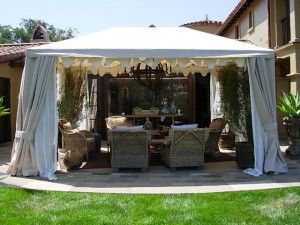
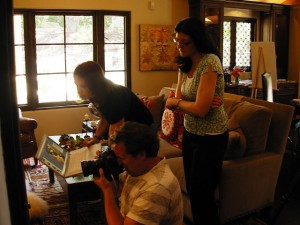
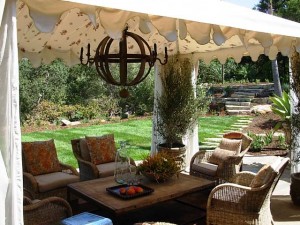
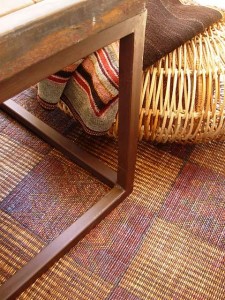
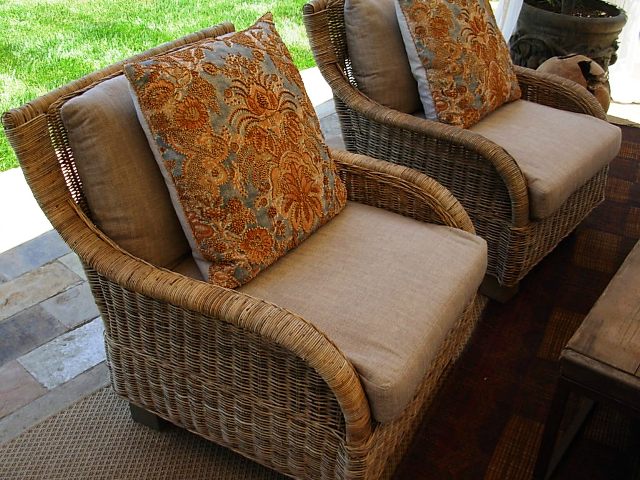 Seating: Deborah selected wicker occasional chairs and piled them high with eclectic textile pillows and basic driftwood-colored linen cushions. The chairs evoke life at the beach, from Porch in Carpinteria.
Seating: Deborah selected wicker occasional chairs and piled them high with eclectic textile pillows and basic driftwood-colored linen cushions. The chairs evoke life at the beach, from Porch in Carpinteria.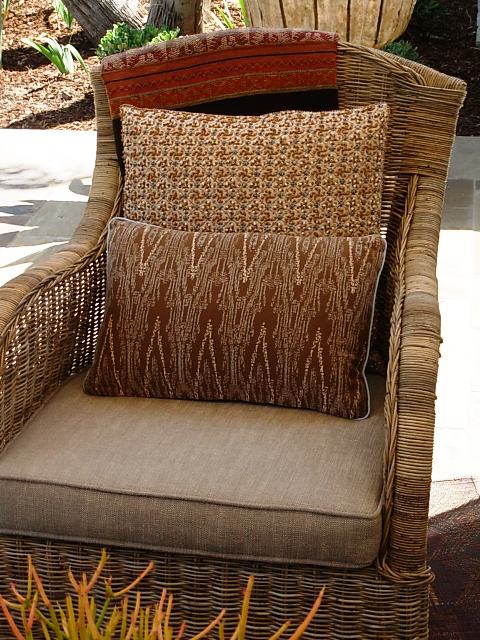 Textiles: Pillows galore lend one-of-a-kind interest and beautiful textures. They tell a narrative of an owner who has traveled widely and who loves to pair old with new; worn with polished; rustic with refined. Pillows from Upstairs at Pierre LaFond and Rooms & Gardens, both in Santa Barbara.
Textiles: Pillows galore lend one-of-a-kind interest and beautiful textures. They tell a narrative of an owner who has traveled widely and who loves to pair old with new; worn with polished; rustic with refined. Pillows from Upstairs at Pierre LaFond and Rooms & Gardens, both in Santa Barbara.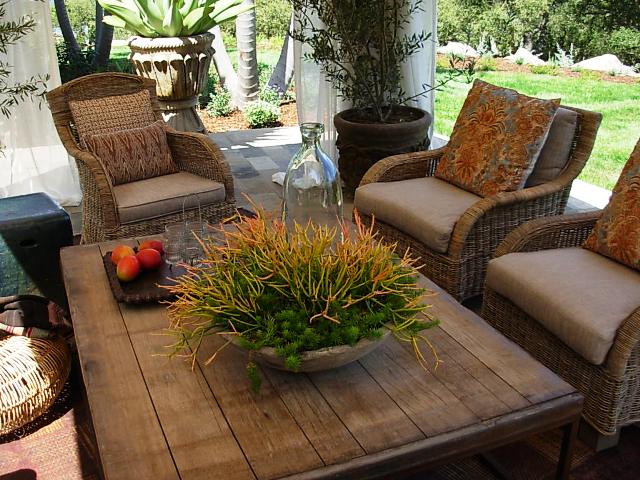 Tables: Weathered and worn, the plank-topped coffee table is large enough to do double-duty as an al fresco dining table. It is by Brick Maker, available at Porch.
Tables: Weathered and worn, the plank-topped coffee table is large enough to do double-duty as an al fresco dining table. It is by Brick Maker, available at Porch.
 Lantern: Okay, the over-sized lantern is a gorgeous thing to behold. I love, love, love that Deborah went BIG in scale in selecting this element of her design. It is called a “Wine Stave” chandelier, made from old wine barrels. You can kind of see the influence in the wood rings. I wish I could have photographed it while lit, but if you squint, you’ll get the idea. This lamp-chandelier makes the design sing! It’s from Porch.
Lantern: Okay, the over-sized lantern is a gorgeous thing to behold. I love, love, love that Deborah went BIG in scale in selecting this element of her design. It is called a “Wine Stave” chandelier, made from old wine barrels. You can kind of see the influence in the wood rings. I wish I could have photographed it while lit, but if you squint, you’ll get the idea. This lamp-chandelier makes the design sing! It’s from Porch.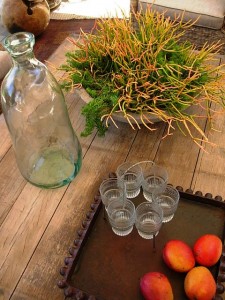
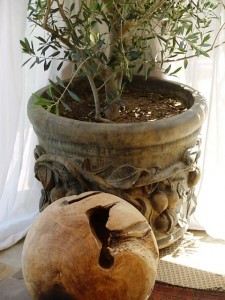
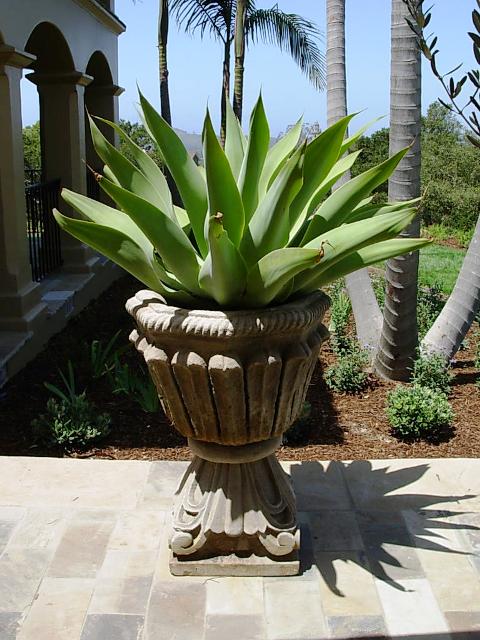 Plants: Drama is key. Each plant needs to have presence in the space, almost as sculpture. The mature Agave, potted in a cast concrete urn, is one example. (Above): The cast-concrete bowl, planted with Euphorbia ‘Sticks of Fire’ is another.
Plants: Drama is key. Each plant needs to have presence in the space, almost as sculpture. The mature Agave, potted in a cast concrete urn, is one example. (Above): The cast-concrete bowl, planted with Euphorbia ‘Sticks of Fire’ is another.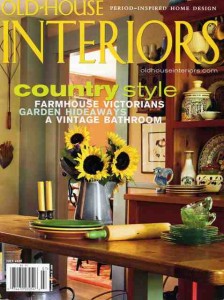 My Stylish Shed partner, the very talented
My Stylish Shed partner, the very talented 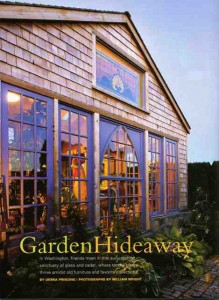
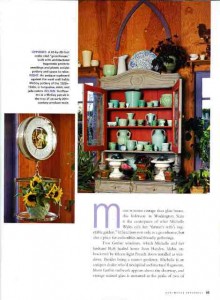 Her design process was anything but logical, Michelle admits. “You can be unrealistic and impractical when you’re making a garden building,” she says.
Her design process was anything but logical, Michelle admits. “You can be unrealistic and impractical when you’re making a garden building,” she says.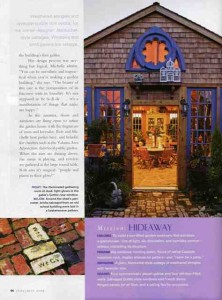 Challenge: To build a sun-filled garden sanctuary that emulates a greenhouse – lots of light, air, circulation, and humidity control – without mimicking its structure.
Challenge: To build a sun-filled garden sanctuary that emulates a greenhouse – lots of light, air, circulation, and humidity control – without mimicking its structure.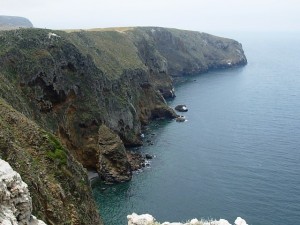
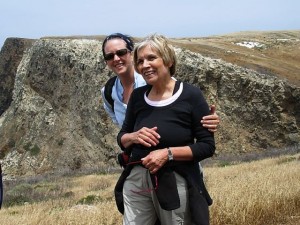
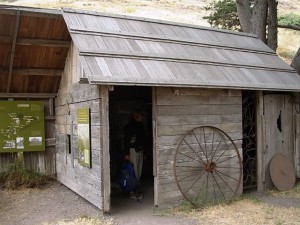
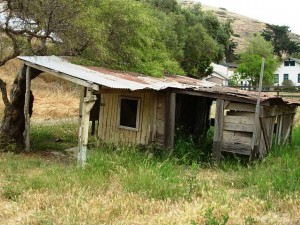
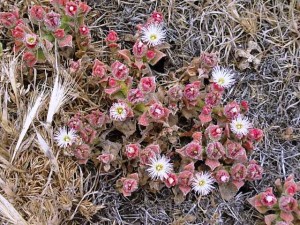
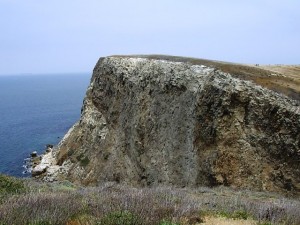

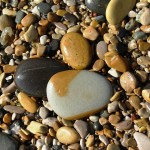
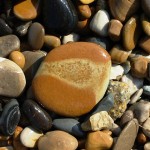
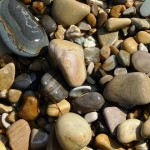
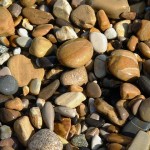
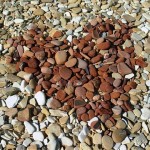
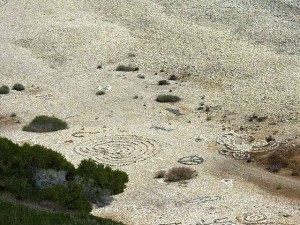
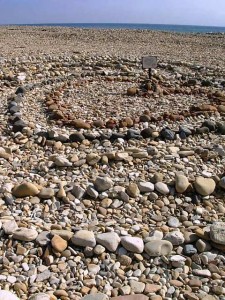

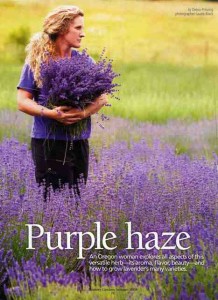 She lives and breathes all things lavender. When gentlewoman-farmer Sarah Bader isn’t working side by side with a few employees to propagate lavender cuttings and harvest armloads of the aromatic herb, she’s walking along hazy purple rows to evaluate her best-performing lavender cultivars. She gardens with lavender, cooks with lavender, perfumes her home with lavender, and is even writing a book about lavender.
She lives and breathes all things lavender. When gentlewoman-farmer Sarah Bader isn’t working side by side with a few employees to propagate lavender cuttings and harvest armloads of the aromatic herb, she’s walking along hazy purple rows to evaluate her best-performing lavender cultivars. She gardens with lavender, cooks with lavender, perfumes her home with lavender, and is even writing a book about lavender.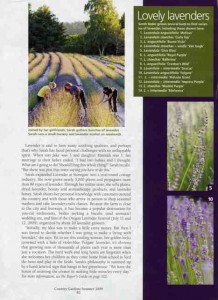 I called Sarah this morning to see how she thought the final story and photography turned out. She was so pleased.
I called Sarah this morning to see how she thought the final story and photography turned out. She was so pleased.